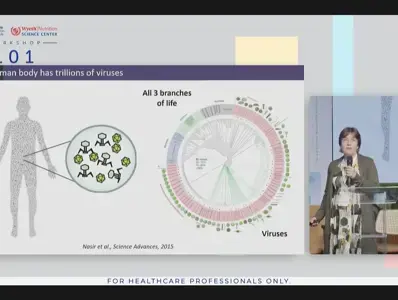The infant gut virome: Knows, unknowns, and avenues for future studies
Professor Alexandra Zhernakov highlights recent meta-analysis findings revealing that about 82,000 viral species have been identified, many of which are novel. The COSPAC cohort found that while viromes and microbes are frequently co-transmitted, they are largely independent. Early life virome has also been linked to feeding methods, and the mode of delivery may have a more enduring impact on viruses compared to its effect on microbes. Lifelines studies is a multi-generational, multi-phenotype prospective follow-up cohort, which examines up to three generations, analyzing and correlating various phenotypes. Preliminary results found that a difference between the maternal and infant virome, and that diversity increases in the first year of life. A possible future direction in the field of virome research is exploring whether these viruses, typically phages of bacteria, could be used to mediate the microbiome and treat diseases, potentially reducing the need for antibiotics.
If you liked this post you may also like

